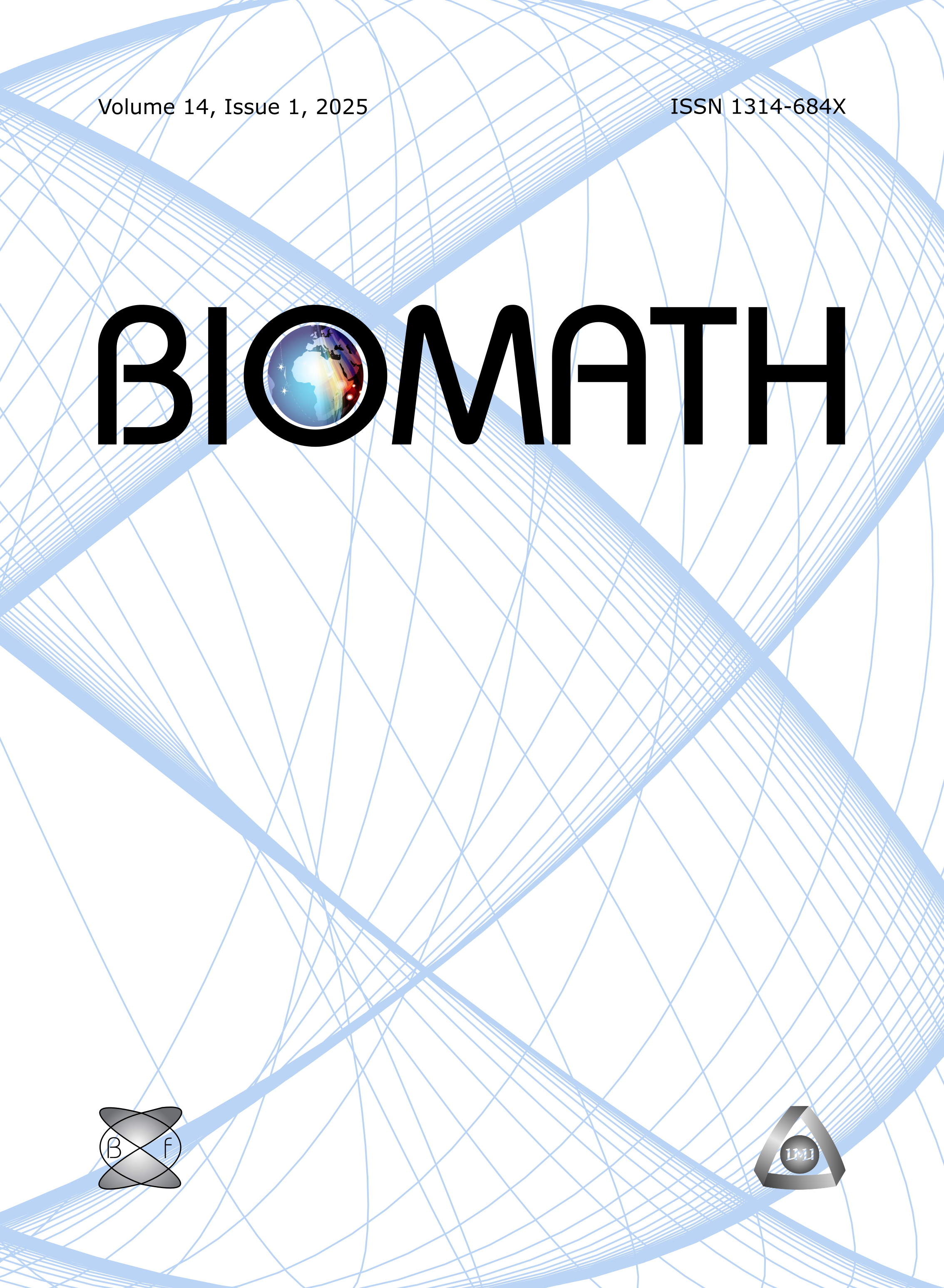A Particular Solutions for a Two-Phase Model with a Sharp Interface
DOI:
https://doi.org/10.11145/j.biomath.2015.03.081Keywords:
Multi-phase modeling, Two-phase modeling, Free boundary problems, Gel Dynamics, Analytic solutions, Exact solutionsAbstract
Two-phase models can be used to describe the dynamics of mixed materials and can be applied to many physical and biological phenomena. For example, these types of models have been used to describe the dynamics of cancer, biofilms, cytoplasm, and hydrogels. Frequently the physical domain separates into a region of mixed material immersed in a region of pure fluid solvent. Previous works have found a perturbation solution to capture the front velocity at the initial time of contact between the polymer network and pure solvent, then approximated the solution to the sharp-interface at other points in time. The primary purpose of this work is to use a symmetry transformation to capture an exact solution to this two-phase problem with asharp-interface. This solution is useful for a variety of reasons. First, the exact solution replicates the numeric results, but it also captures the dynamics of the volume profile at the boundary between phases for arbitrary time scales. Also, the solution accounts for dispersion of the network further away from the boundary. Further, our findings suggest that an infinite number of exact solutions of various classes exist for the two-phase system, which may give further insights into the behaviors of the general two-phase model.Downloads
Published
Issue
Section
License
The journal Biomath is an open access journal. All published articles are immeditely available online and the respective DOI link activated. All articles can be access for free and no reader registration of any sort is required. No fees are charged to authors for article submission or processing. Online publications are funded through volunteer work, donations and grants.
Authors who publish with this journal agree to the following terms:
- Authors retain copyright and grant the journal right of first publication with the work simultaneously licensed under a Creative Commons Attribution License 4.0 that allows others to share the work with an acknowledgement of the work's authorship and initial publication in this journal.
- Authors are able to enter into separate, additional contractual arrangements for the non-exclusive distribution of the journal's published version of the work (e.g., post it to an institutional repository or publish it in a book), with an acknowledgement of its initial publication in this journal.
- Authors are permitted and encouraged to post their work online (e.g., in institutional repositories or on their website) prior to and during the submission process, as it can lead to productive exchanges, as well as earlier and greater citation of published work (See The Effect of Open Access).

